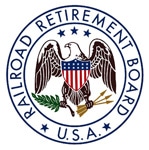
A move for Norfolk Southern, the second-biggest railroad in the eastern U.S., would revive Canadian Pacific’s effort to build a transcontinental carrier after talks with CSX Corp. failed last year. In floating the idea of a CSX tie-up, Canadian Pacific Chief Executive Officer Hunter Harrison upended the long-held view in the industry that it was fruitless to even discuss another merger because regulators would object. Read more from Bloomberg Business.
Author: matrixsuperadmin

Now that TransCanada Corp.’s Alberta-to-Gulf-Coast pipeline has been denied, however, it’s clear that the contest between KXL and railroads in Canada’s western oil patch wasn’t a zero-sum game.
Rail shippers could see a modest boost from the pipeline’s defeat, but analysts say Canada’s crude-by-rail business must first overcome unfavorable price spreads, potentially burdensome new regulations and below-$50-per-barrel oil.
Read more from E&E Publishing, LLC.

This guidance revises Question 2 of the regulatory guidance for §395.15 which prohibits CMV drivers from “amending” AOBRD records (65 FR 16370, 1997). FMCSA notes that the prohibition was put in place because technology at the time did not allow for distinguishing legitimate amendments to the records from falsified ones. With modern information technology systems and controls, and the ability for records to reflect both the original and edited entry, FMCSA believes that this no longer represents as much of a concern.
Further, FMCSA states that drivers may need to make legitimate changes to their AORBD record, and should be able to do so. This revision will allow drivers to edit entries as long as the AOBRD record reflects both the original entry, the revised entry, information on who made the revision, the time and the reason. Drivers may only make edits relating to driving time in cases of unidentified or team drivers, or if an entry was assigned to the wrong driver. Finally, motor carrier staff may request a driver make an edit, in which case the driver must choose to accept or reject the change, and resubmit and re-certify the corrected record.
This guidance is retroactively effective October 2, 2015. Click here to read FMCSA’s regulatory guidance as published in the Federal Register.

SMART TD retired General Chairperson Cory Mayberry (Elgin, Joliet & Eastern Railway GCA 329) was fatally injured in a motorcycle crash at 2:30 p.m. November 4, 2015. Mayberry served as general chairperson for 13 years representing switchmen, hostlers and yardmasters on the former Elgin, Joliet and Eastern and Gary Railway.
He is survived by his wife Helen (Vorgias) Mayberry; sons, Justin Mayberry of Valparaiso, Frank (Kira) Quarles, Cory (Tylar Fiscus) Mayberry II; mother, Anna Ross and step father, Ben Ross; brother, Eric (Karen) Mayberry; sister, Debi Krall; grandchildren, Annah Mayberry and Tyler Peek and one granddaughter on the way; and numerous nieces, nephews and extended family and friends. He was preceded in death by his father, Robert Mayberry; sisters, Lorrie Boyd and Kimberly Duncan.
SMART TD Vice President David Wier said, “Mayberry was one-of-a-kind and represented his members with everything he had. He was the consummate general chairperson and will be sorely missed by his SMART TD brothers and sisters.”
Arrangements are under the care and direction of Edmonds & Evans Funeral Home, 6941 Central Avenue, Portage, Ind. Visitation for friends and family will be November 8 from 2:00 p.m. to 8:00 p.m. Funeral services will be held November 9 at 10:00 a.m. Interment will follow at Graceland Cemetery, Valparaiso, Ind.
Click here to view obituary and leave condolences.
WASHINGTON — In 1981, while traveling on a corporate jet, Richard M. Bressler, the chairman of the Burlington Northern Railroad, hit on an idea: What if the technology used by airlines to track the location of planes and help prevent accidents was applied to the rail industry?
Mr. Bressler, an engineer by training and a former airline executive, directed a small group of his employees to come up with a similar system for the railroads.
The result was a safety system called the Advanced Railroad Electronics System, or ARES, which was soon placed on several trains on a section of track in Minnesota. The system, among other safety features, allowed dispatchers to stop trains automatically if the engineer exceeded speed limits.
Read more from the New York Times.

The amendment, from Reps. Reid Ribble (R-Wis.), Kurt Schrader (D-Ore.), David Rouzer (R-N.C.) and Collin Peterson (D-Minn.), would allow states to decide whether they want to increase a current limit of 80,000 pounds for cargo trucks to 91,000 pounds.
Proponents wanted to attach it to the highway bill in an attempt to end a bitter fight over truck weights that has raged for years in Washington. The proposal was rejected 187-236 in a House floor vote.
Read more from The Hill.

The news gets better. This 32-year estimate is based on the most pessimistic of three scenarios considered by the Actuarial Advisory Committee. The other two projections, described as “optimistic” and “moderate,” both suggest there will be no cash-flow problems for a 75-year projection period.
The advisory committee has further recommended that no change be made in the rate of tax imposed on employers and employees, and no diversion of taxes be made from the Railroad Retirement Account to the Railroad Unemployment Insurance Account.
“The long-term stability of the system, however, is not assured,” said the RRB’s Chief Actuary Frank J. Buzzi. “Under the current financing structure, actual levels of railroad employment and investment return over the coming years will determine whether additional corrective action is necessary.”
As of Dec. 31, 2013, the combined RRB accounts totaled more than $26.5 billion. In comparison, the 25th actuarial valuation forecasted stability over the next 23 years, and Sept. 30, 2011, assets totaling $23.6 billion.
More about this report:
Section 15(g) of the Railroad Retirement Act of 1974 requires that the RRB, at intervals not longer than three years, estimate the liabilities created by the act and include the estimate in its annual report. Section 22 of the Act requires that the board submit to the President and the Congress, by July 1 of each year, a report containing a five-year projection of the revenues to and payments from the Railroad Retirement Account. The Railroad Solvency Act of 1983 requires that the board submit to the Congress, by July 1 of each year, a report on the actuarial status of the retirement system.
The full 104-page report can be found here: http://www.rrb.gov/pdf/act/valuation.pdf.

Bonds had committed his life to Operation RedBlock, a labor-developed, management-adopted drug-and alcohol-prevention/intervention program begun more than 30 years ago to provide assistance to thousands of union brothers and sisters on various railroads.
A featured speaker at the SMART 2015 Business Agents’ Conference, Bonds believed in the concept of peer involvement to prevent employee use of alcohol and drugs while on duty or subject to call. Nationally recognized as a leader in crisis intervention, he trained more than 25,000 lay-professionals, volunteers and mental health professionals in the U.S. and Europe to deal with workplace and family crisis interventions.
Bonds was a trustworthy friend to many, known for his strong leadership, his ability to bring people together, and his positive outlook on life. Those who knew him best describe him as a man of character, a model of competency, determination and integrity.
Bonds is survived by his wife, Ronna; four children, his mother and brother.
Services were held Nov. 1, 2015, in Philadelphia, Pa. Contributions in his memory can be made to the Main Line Health Home Care and Hospice Foundation, 240 Radnor-Chester Rd., Radnor, PA 19087, or the Lung Cancer Alliance, 1700 K St. NW, Ste. 660, Washington, DC 10006.
Operation RedBlock provides education, counseling, references for treatment, and a mechanism for employees to mark off without reprisal if impaired when called for work. The program aims to change attitudes, reduce the tolerance of nonusers to job-related drug and alcohol use, and encourage users to seek assistance.
Click here to view Bonds’ obituary or to leave condolences.

According to one BNSF employee who contacted the Pilot, the company has imposed a new method of operation that has employees working 12-hour days, sometimes six to 10 days in a row.
“Such a safety sensitive job for engineers and conductors running trains that are up to 17,000 tons, hauling hazardous materials and such,” said the employee who declined to be publicly identified.
Read more from Bakken.com.
[As published By John Previsich And Edward Wytkind in The Modesto Bee]

California has more museums dedicated to railroads than any other state in our country – and it’s easy to see why. From the transcontinental railroad to the developing high-speed rail system, rail transportation has played a significant role in shaping this state’s history.
The people of California believe passenger rail is key to the state’s future, too. At a public hearing in Modesto last summer, plans to improve and expand passenger rail service received overwhelming support from area residents, Republicans and Democrats alike. And a new poll prepared by Dean Mitchell of DFM Research found those same sentiments are shared by the people of California’s 10th Congressional District.
Those living in the district enjoy six daily Amtrak train routes in the San Joaquin Valley, running from Bakersfield to Sacramento and the Bay Area. More than 8 of 10 polled say they want to see Amtrak service increased or at least remain the same, and more than 80 percent want commuter rail services increased or maintained at current levels.
Modesto-area residents aren’t alone. As Amtrak continues to grow in popularity – ridership hit an all-time high in 2014 with 31 million passengers – an overwhelming majority of Americans support increasing passenger rail service in all parts of the country, both in traditionally blue and red states from the south to the Midwest and Northeast.

Sadly, not everyone is hearing this call.
Some in Congress continue to fight the old anti-Amtrak wars by proposing the elimination of all federal funding to support the service, which would bankrupt the railroad and strand riders in California and across America. While those efforts have failed, the persistence of anti-passenger rail forces has brought headwinds to efforts to advance a robust passenger rail expansion and modernization plan.
Like the vast majority of Americans, most residents of Stanislaus County and the surrounding areas have shown they don’t agree with such proposals. In fact, when told that Amtrak gets over $1 billion per year in federal support, more than 80 percent say they reject attempts to eliminate it and want to continue the current funding level.
In addition to expanded passenger rail service, Californians also say emphatically that they favor policies making rail transportation safer.
Not unlike the views of most Americans, the idea of running 19,000-ton freight trains – many containing hazardous materials – with only one crew member doesn’t sit well with the people of the 10th Congressional District. With up to 50 freight trains running through the region each day, a stunning 95 percent of residents support a state law requiring a minimum of two crew members on all freight trains running through California – such as the one signed into law in September by Gov. Jerry Brown.
More than 90 percent of those surveyed want national legislation mandating the same thing. This issue impacts passenger rail safety as well, because in most parts of the country Amtrak shares the tracks with freight trains.
Californians understand that having a safe, efficient rail system is vital to a strong economy. We need actions that can bring relief to a clogged transportation system that is choking productivity, stunting job creation and undermining efforts to grow our economy. California voters couldn’t be more clear: they like passenger rail service, they want more of it and they expect their elected officials to make it as safe as possible.